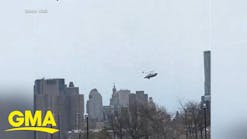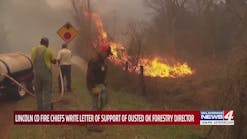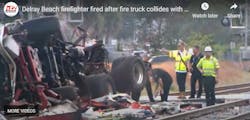Just about everything we are involved in has a set of rules. Orderly societies, communities and cultures establish rules for behavior, deportment and discipline to maintain a controlled, safe and productive environment. We make rules to provide guidance to the folks in our group and to direct our efforts toward positive and productive outcomes.
When we drive on the highway, we follow the rules — or we receive a summons. When we play football, we follow the rules — or we receive a penalty. When we play cards, we follow the rules — or we are thrown out of the game. Most firefighters can quote the rules of their firehouse softball league, yet many don't follow the "rules of firefighting." These rules are simple and apply to everyone. Let's look at them:
- Personal protective equipment (PPE) — Every time you respond to an emergency call, you should get off the rig with all of your PPE on. You should be completely and properly dressed for any possible situation. Bunker pants with suspenders up. Coat buttoned, to the top. Helmet on with chinstrap in place. Hood on and ready for use. Gloves on. Yes, on! Be dressed and be ready.
- Self-contained breathing apparatus (SCBA) — You must wear your SCBA into every building you enter. You must wear it for every call for a fire, smoke, an unknown odor, a gas leak, a chemical odor, etc. Having your SCBA on your back at a fire call is like wearing a parachute on an airplane. You may not need it a hundred times, but when the situation suddenly calls for it, you will be ready.
- Tools and equipment — The tools and equipment on your apparatus need to be checked, cleaned, fueled and handled frequently. Career firefighters should open compartments, visually check for the presence of the tools, and handle and clean them, every tour. Saws need to be started, yes, started and run to see that they are operational. This entire process can be completed in 30 minutes or less and not only ensures that the tools are there, but that they are working, fueled and ready for use. Volunteers should perform this same function during their scheduled training periods.
- Training — Whether you work 40 hours per week in the firehouse or you're a volunteer, you need to train regularly. Training is the technical and tactical basis for your operational readiness and ability. If you are not training, you are not ready! Career firefighters should be involved in an hour of training every time they are on duty. If you work 24s, you can spare an hour for training. I know you spend at least an hour involved in several other not-so-productive activities, so whether you are an officer or firefighter, find the time and train like it matters.
- Alarm attitude — Treat every alarm like it's the real thing. Don't ever get on a rig thinking that the call you are responding to is "nothing." Every call can evolve into a deadly situation if you approach it with anything less than 100% readiness. When the military scrambles fighter jets for a perceived threat, they go at it as though the survival of the entire nation is at stake. Adopt and practice this "always ready" attitude on your next response.
- On the road — For those of us who drive our apparatus, and for the officers supervising them, start or keep thinking about the safety and survival of your on-board crew as your primary responsibility. We've all heard the saying that we can't help our citizens if we don't get to the call. It's true, but hard to remember when the dispatcher tells us we have a working fire and people are trapped.
What we need to do is set driving priorities. Our first priority is our on-board crew. Our second priority is the motorists we are encountering enroute to the call, and the people waiting for us at the other end of our response are third. In case you're counting, that's last! An injured or killed motorist at the scene of an apparatus accident has exactly the same tragic impact as a fire victim. Practice restraint, drive with discipline, and get your crew to the emergency and back to the firehouse safely.
These are just a few of the very basic and, by the way, easily complied with rules of firefighting. You don't need to be a chief or even an officer to recognize the value of and follow these rules. Read them, copy them and post them on the bulletin board at the fire station.
Start behaving like the professional firefighter that you are and others will take notice and maybe even follow your lead. You are the person that is most in control of your own safety and survival, so follow the rules!
JOHN J. SALKA JR., a Firehouse® contributing editor, is a 28-year veteran battalion chief with FDNY, the commander of the 18th battalion in the Bronx. Salka has instructed at several FDNY training programs, including the department's Probationary Firefighters School, Captains Management Program and Battalion Chiefs Command Course. He conducts training programs at national and local conferences and has been recognized for his firefighter survival course "Get Out Alive." Salka co-authored the FDNY Engine Company Operations manual and wrote the book First In, Last Out — Leadership Lessons from the New York Fire Department. He also operates Fire Command Training (www.firecommandtraining.com), a New York-based fire service training and consulting firm.





